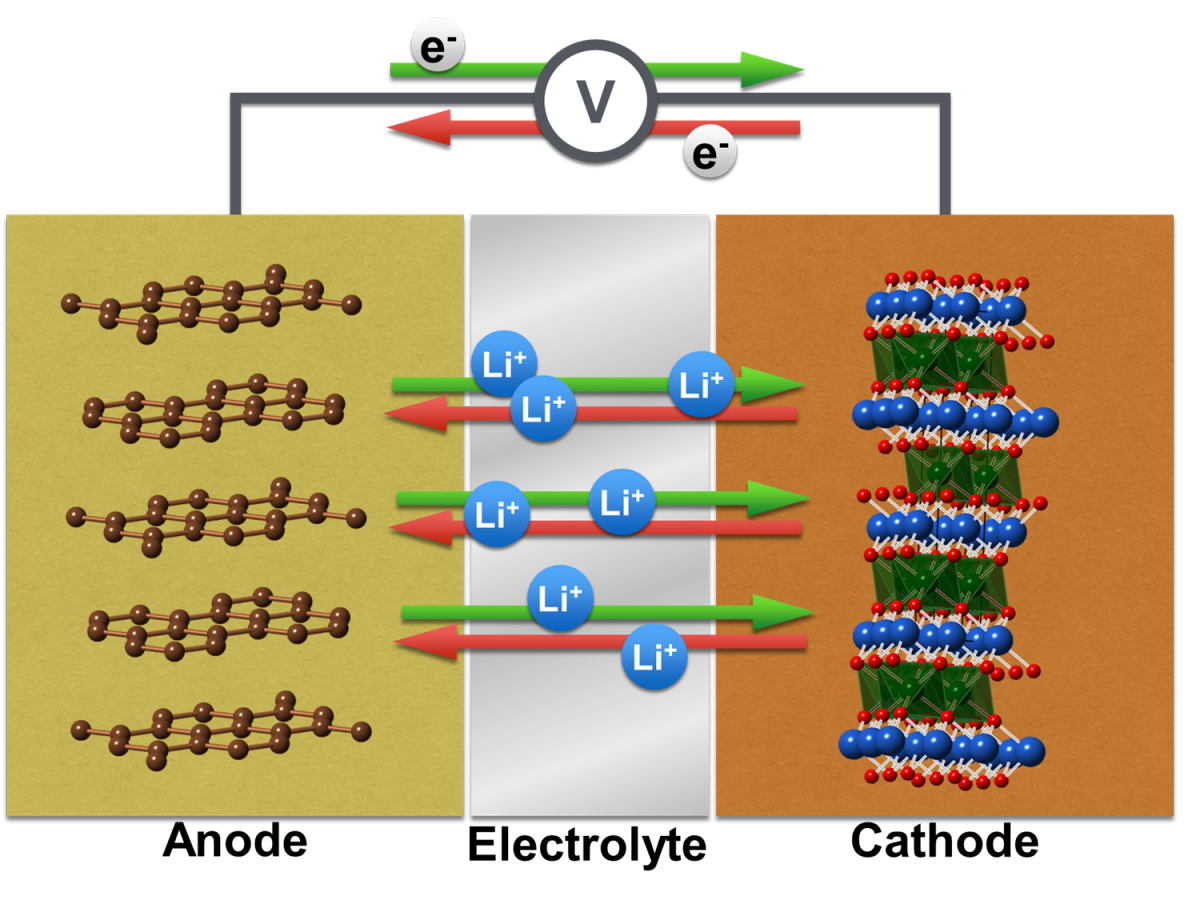We all depend on the performance of rechargeable batteries which are used in our mobile phones and laptops. With the increasing worldwide demand for energy and the global need to move towards utilization of sustainable energy resources (such as solar and wind) these batteries play an even more significant role in our lives. To do so, rechargeable batteries, which are currently based on lithium ion intercalation chemistry, need to provide more energy and last longer (while maintaining safety and low cost).
all depend on the performance of rechargeable batteries which are used in our mobile phones and laptops. With the increasing worldwide demand for energy and the global need to move towards utilization of sustainable energy resources (such as solar and wind) these batteries play an even more significant role in our lives. To do so, rechargeable batteries, which are currently based on lithium ion intercalation chemistry, need to provide more energy and last longer (while maintaining safety and low cost).
Thus there is great interest in developing high energy materials for lithium ion batteries as well as novel battery chemistries beyond lithium ion. The development of successful battery systems requires detailed mechanistic understanding of how the battery materials function at the molecular-atomic level. Furthermore, since battery cells are complex systems composed of electrodes, electrolyte salt and solvents, additives, polymer binders etc. their performance and cycle life depend strongly on the interactions between all these components.
Our research is focused on elucidating the electrochemical and chemical processes in Li-ion and novel battery chemistries. We use and develop advanced solid state NMR techniques to gain molecular level insight into how these systems function and why they fail – so that we can improve them. In addition to NMR we use more ‘traditional’ characterization tools such as X-ray diffraction, XPS and electron microscopy.
Some examples for the use of NMR in the study of battery cells and materials:
- Li-Oxygen (Air): Elucidating the role of LiNO3 additive in Li-oxygen cells. ACS Applied Materials and Interfaces (2018) 10, 35, p. 29622-29629
- Interfaces and Interphases: Determining the chemical composition of the solid electrolyte interphase on reduced graphene oxide. Journal of Physical Chemistry Letters (2017) 8, 5, p. 1078-1085 Understanding the strucutre and function of thin protection layers for cathode materials. Chemistry of Materials (2019) 31, 10, p. 3840-3847; Energy Storage Materials (2019) 19, p. 261-269; Energy Storage Materials (2020) 33, p. 268-275; Journal of the American Chemical Society (2021) 143, 12, 4694-4704
New (and very cool!) method to probe ion tranport across the solid electorlyte interphase: J. Am. Chem. Soc. 2022, 144, 22, 9836–9844 - Review: What Can We Learn from Solid State NMR on the Electrode–Electrolyte Interface? Shira Haber, Michal Leskes Advanced Materials (2018)


